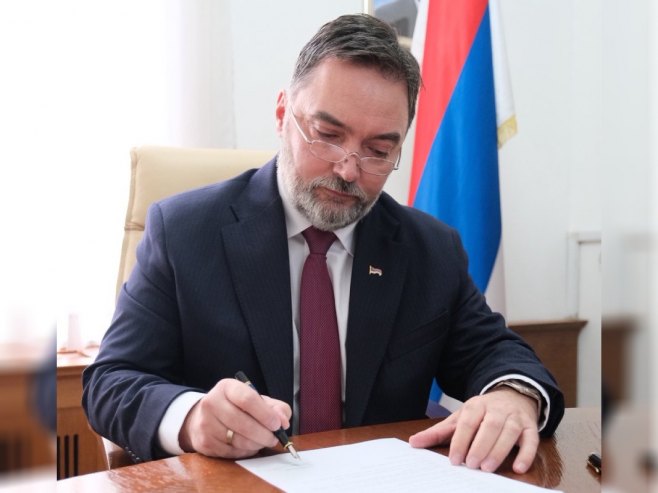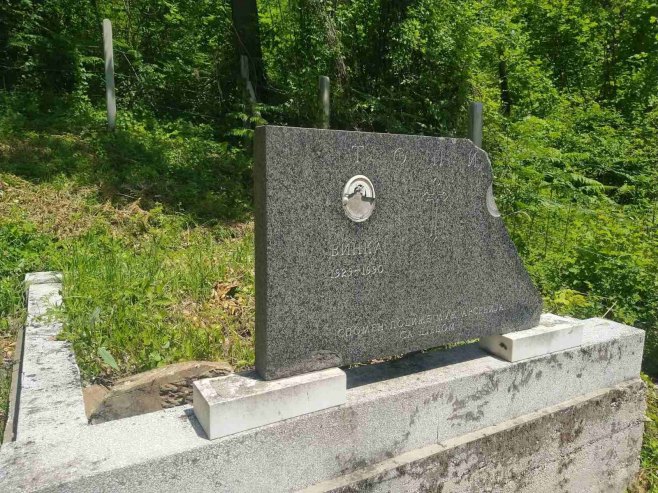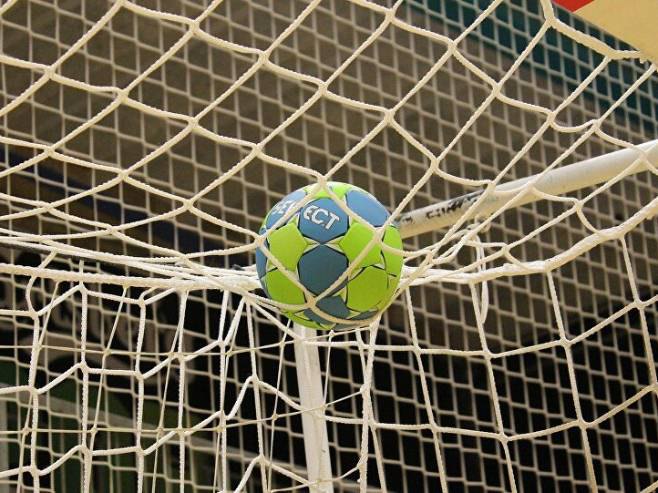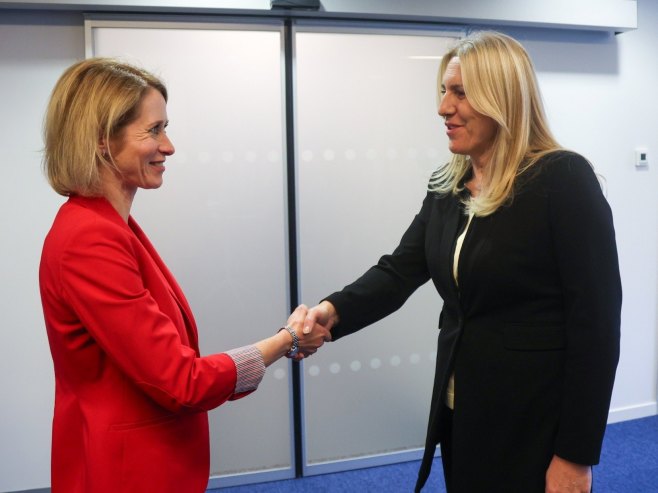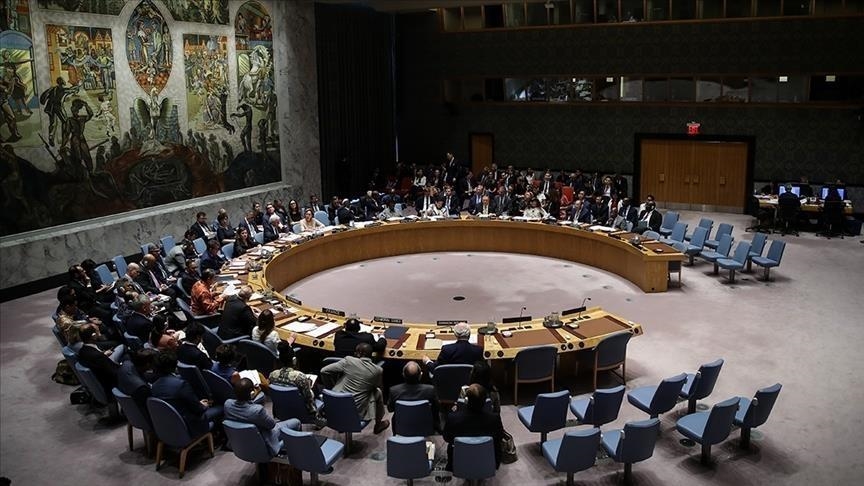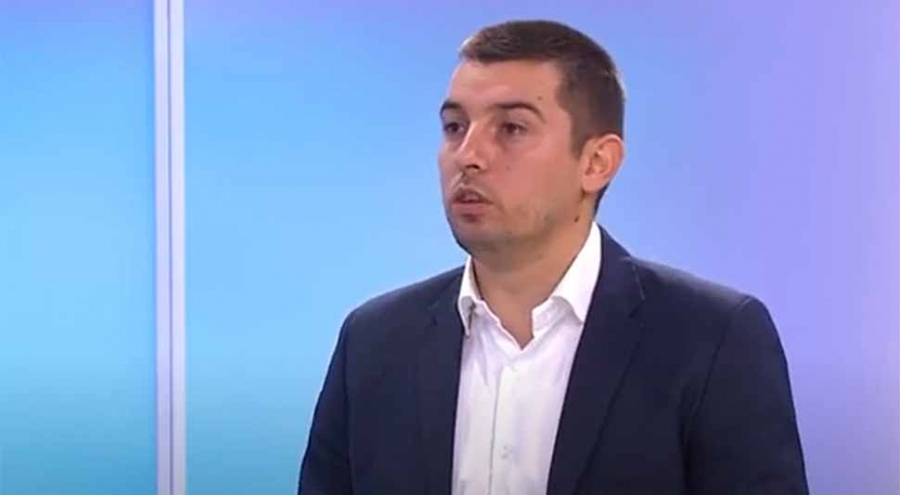In the Federation of BiH this year, 72 attacks have been recorded on Serb property and assets of the Serbian Orthodox Church. The latest act of vandalism was the destruction of tombstones at the Orthodox cemetery in the village of Pečuj near Zenica, which had withstood Ottoman and Austro-Hungarian occupations but not the harsh present in this entity, sending a dangerous message both to displaced and remaining Serbs.
After nearly half a million Serbs were expelled from the territory of today’s Federation, their cemeteries, churches, and private property are now being destroyed and looted, showing that the persecution continues almost three decades after the signing of the Dayton Peace Agreement.
When it comes to desecration of Orthodox tombstones, investigators have yet to determine who vandalized the cemetery in Pečuj, where 60 crosses were broken, some more than 150 years old, proving the centuries-long Serb presence in the area.
The restoration of destroyed tombstones has not begun, despite many promises of help. The few remaining Serbs in Zenica and the clergy of the Serbian Orthodox Church ask: what is the goal if even the dead are not left in peace?
The destruction of Orthodox tombstones near Zenica represents the final stage of erasing Serb traces in these areas. Out of nearly 30,000 Serbs in Zenica before the war, only about 600 remain today. The rest resettled or sold their property, leaving only graves as witnesses of their presence, and even those traces are now being targeted.
Similar vandalism occurred in 2017 at the Mošćanica Orthodox cemetery near Zenica. In Kakanj, chapels are often looted, a church in Tuzla was robbed, and cars belonging to Serb returnees in Mostar were set on fire.
“There is no punishment, no thorough police or prosecutorial investigations, no court rulings for these unacceptably frequent acts of vandalism. There is no political will. Only where there is a Serb soldier, a Serb policeman, a Serb state, are Serbs safe from attacks, and their property, churches, and cemeteries secure. For us, the only safe home is Republika Srpska,” stressed Đorđe Radanović, president of the Committee for the Protection of Serb Rights in the Federation of BiH.
Radanović called it the most heinous act, saying he cannot understand the source of such hatred toward Orthodoxy and the Serb people. He pointed out that Orthodox cemeteries are also being destroyed in Maglaj, Kakanj, Zavidovići, and Breza.
“It is important to know that in the Federation of BiH everything that is Serb and Orthodox is under attack. This is not politics or exaggeration. They seized 675 military apartments from Serbs who served in the Yugoslav People’s Army,” Radanović noted.
He emphasized that no Serbs are employed in Federation government institutions, that Serb children formally have Cyrillic in schools but do not actually learn it, and that most road signs written in Cyrillic are crossed out or spray-painted over. While the Catholic Church and Islamic Community receive large budget allocations, the Serbian Orthodox Church gets only symbolic amounts.
Radanović reminded that Serbian Orthodox Church properties in Sarajevo, such as the Seminary building now used by the Faculty of Economics, have not been returned. He added that people are attacked for wearing T-shirts with Cyrillic inscriptions and that tires on cars with Belgrade, Novi Sad, and Valjevo license plates were slashed in downtown Sarajevo on New Year’s Eve. “Countless examples show attacks on Serb symbols and everything that testifies that Serbs once lived in the Federation,” he said.
According to the Committee, while 542,879 Serbs lived in the Federation in 1991, the 2013 census recorded only 56,550. Until 1991, Serbs made up the majority on 32.2% of Federation territory, in 785 settlements. Today, they are nearly gone.
Goran Broćeta, Serb delegate in the Federation Parliament’s House of Peoples, said the position of Serbs in the Federation remains as it was in the 1990s. “The desecration of tombstones in Zenica confirms that the continuity of persecution has not been broken since the war. Constitutional provisions recognizing Serbs as a constituent people largely remain dead letters, while some cantonal constitutions never even included them,” Broćeta told Srna.
He stressed that many unconstitutional acts discriminating against Serbs were even struck down by the Constitutional Court, but those rulings remain ignored. “An example is the ruling following the formation of the Posavina Canton government. There are countless similar cases throughout the Federation,” he said, adding that authorities and the international community consistently fail to react.
Broćeta noted that only in Canton 10 (Livno) are constitutional provisions for Serbs partially respected, while in other cantons, the only guaranteed right for Serbs is permanent disappearance. “Waiting for some distant sunny morning, we continue our David-and-Goliath struggle,” he said.
Dušan Šehovac, president of the “Truth and Justice” Association, said that in modern times global and domestic powers hostile to Serbs are targeting their identity wherever they live. “Everything that can be renamed, appropriated, looted, desecrated, and destroyed from our cultural, historical, and spiritual heritage is under attack, especially in areas without Serb political control. On the front line are the Serbian Orthodox Church, its sanctuaries, churches, chapels, and cemeteries, which are undeniable proof of centuries of Serb presence,” Šehovac stated.
He recalled that until the 1970s, Orthodox Serbs were the majority in what is today Sarajevo Canton. His association has documented nine churches, dozens of parish homes and chapels, and about 150 Orthodox cemeteries there, all damaged or looted during and after the war.
Šehovac stressed that cemeteries are sacred cultural sites for every community, as tombstones preserve memory and have immense historical and cultural value. “They are stone books recording the lives of individuals, families, and nations, left to descendants as proof of identity and existence in a given area. That is why our enemies destroy them—to erase traces of our presence in the Federation of BiH, from which around 500,000 Serbs left, mostly under pressure,” Šehovac concluded.
Source: RTRS
